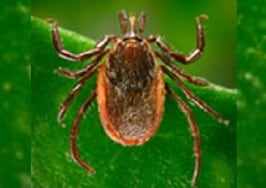Tick-Borne Diseases

Tick-borne pathogens can be passed to humans by the bite of infected ticks. Ticks can be infected with bacteria, viruses, or parasites. Some of the most common tick-borne diseases in the United States include: Lyme disease, babesiosis, ehrlichiosis, Rocky Mountain Spotted Fever, anaplasmosis, Southern Tick-Associated Rash Illness, Tick-Borne Relapsing Fever, and tularemia. Other tick-borne diseases in the United States include: Colorado tick fever, Powassan encephalitis, and Q fever. Lyme disease is the most commonly reported tick-borne disease in the United States. In 2010, more than 22,500 confirmed and 7,500 probable cases of Lyme disease were reported to the Centers for Disease Control and Prevention (CDC).
Outdoor workers are at risk of exposure to tick-borne diseases if they work at sites with ticks. Worksites with woods, bushes, high grass, or leaf litter are likely to have more ticks. Outdoor workers in most regions of the United States should be extra careful to protect themselves in the spring, summer, and fall when ticks are most active. Ticks may be active all year in some regions with warmer weather.

Protecting Yourself from Ticks and Mosquitoes:pdf icon Print or order this free card for easy access to important safety information.
